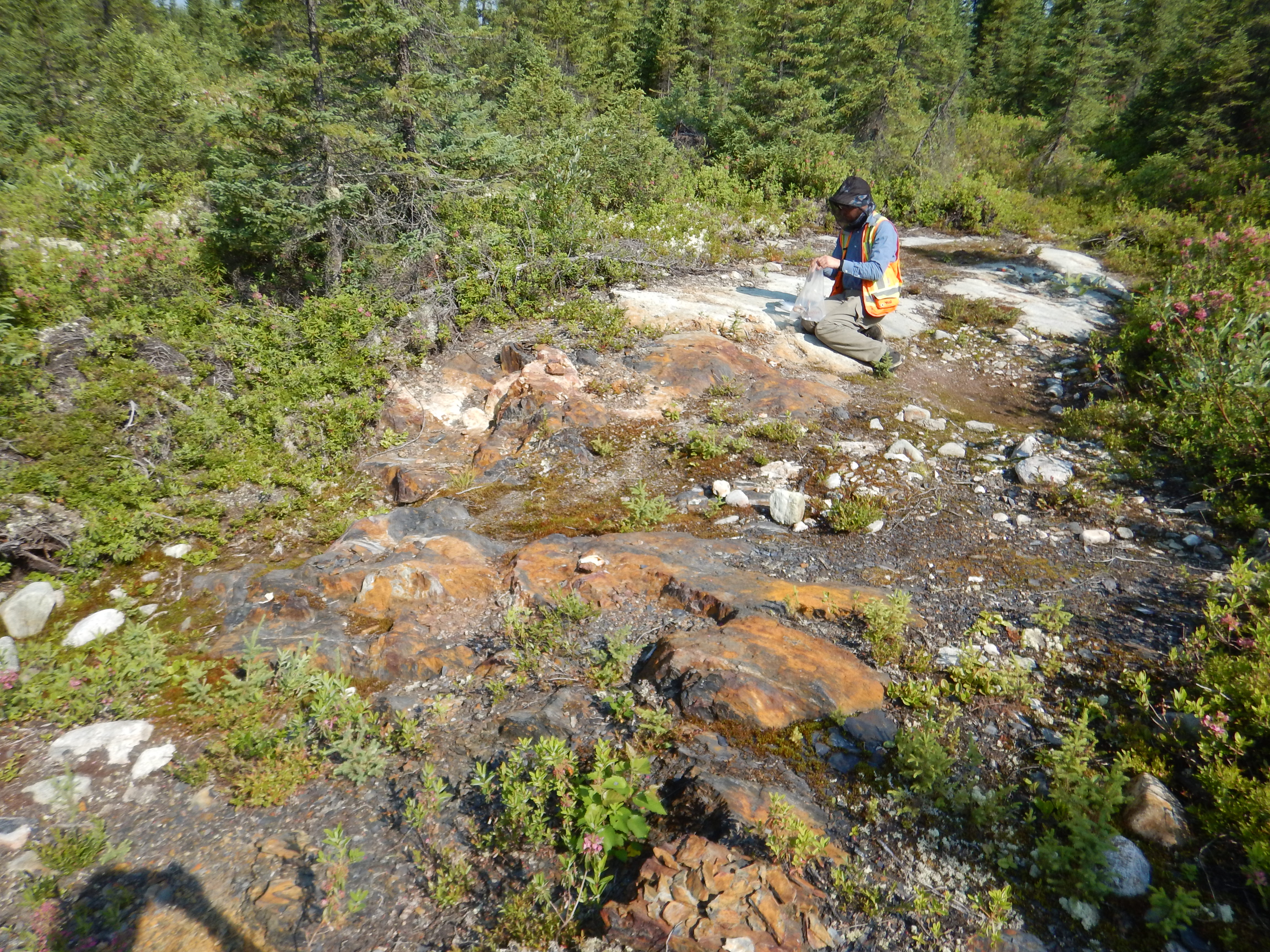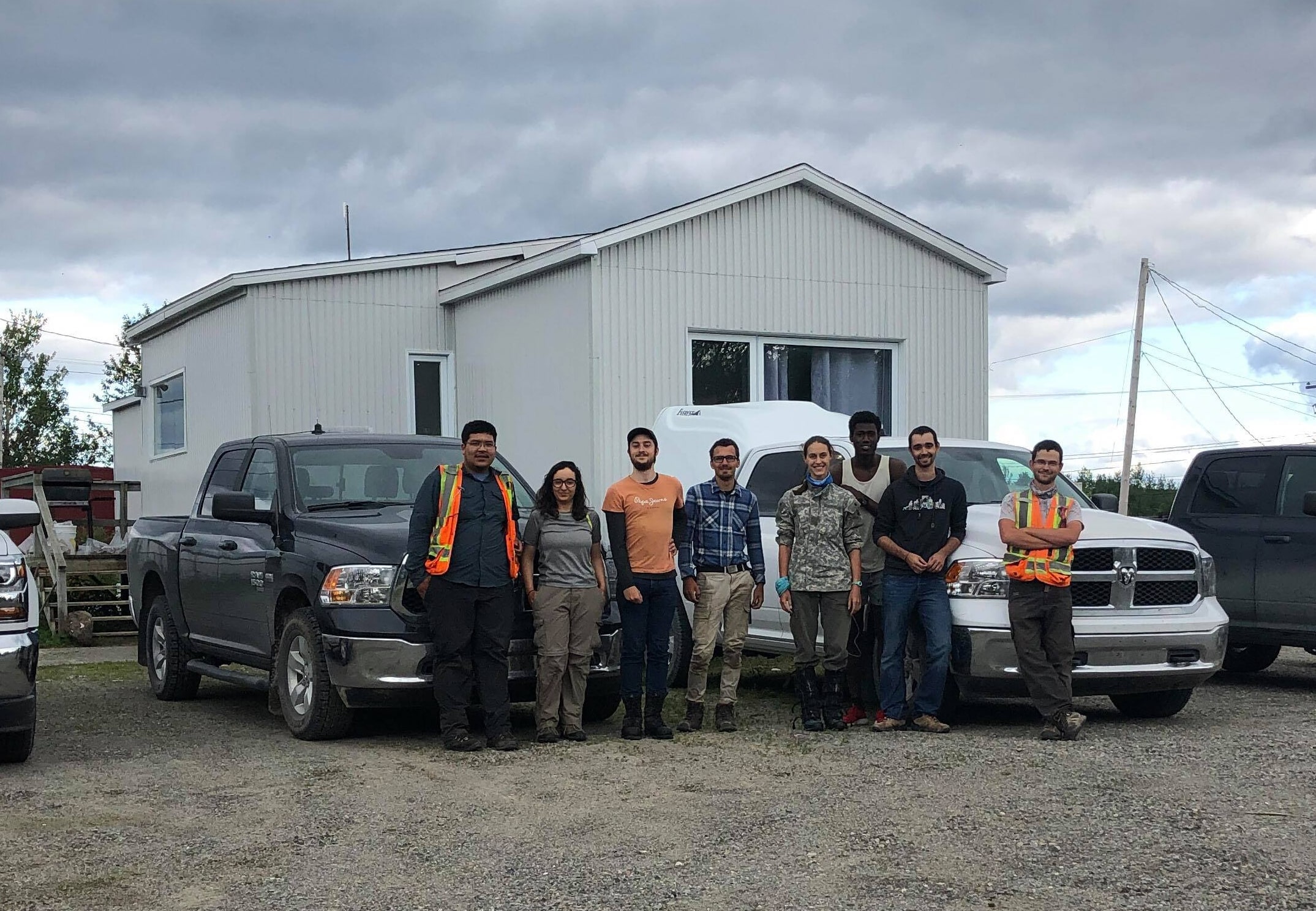Tue
17 Sep 2019Metal Earth Transect: Chibougamau
Field Updates with Metal Earth Researchers on the Chibougamau, Québec transect
Transect Field Team:
Pierre Bedeaux (RA), Adrien Boucher (Msc), Marie Kieffer (Msc), Yohannes Degnan (FA), Julien Huguet (Msc), Marcel Belalahy Brandy (FA), Nesrine Mokchah (FA), and Mathieu Robin (FA).
The Chibougamau area, when compared to the rest of the Abitibi Subprovince, has several unique characteristics: fold-dominated architecture, lack of komatiites, unusual intrusions (layered complex and polyphased pluton), and a large amount of “intrusion-related” (sensus largo) mineralisation.
The 2019 field season was focused on several objectives for the Chibougamau research team. Pierre Bedeaux was interested in the overall impact of major structures as boundaries between large lithologic domains and on metamorphism gradient, as well as the sedimentary environments and ages of deposition of the four sedimentary basins located in the area.
The field team made up of 3 MSc candidates and 4 field assistants, also contributed to completing complementary mapping work on the Eau Jaune Complex, and to determining the nature and origin of the Chevrillon Pluton, located in the northern part of the transect, inside the Chebistuan Formation.
Pierre Bedeaux, Research Associate
Université du Québec à Chicoutimi (UQAC)
Pierre Bedeaux acts as transect leader for the Chibougamau transect. His two main interests are: (1) the overall impact of major structures as boundaries between large lithologic domains and on metamorphism gradient; (2) the sedimentary environments and ages of deposition of the four sedimentary basins located in the area.
The image below: shows a trench located inside the Guercheville Fault, the second newly discovered shallow-dipping structure related to a reflector on the seismic survey. The fault is commonly expressed by extensive ankerite alteration. Evidence suggests that the structure is a large boundary between two different lithological domains in the southern part of the transect.
![]()
Adrien Boucher, MSc Candidate
Université du Québec à Chicoutimi (UQAC)
Adrien is working on the mafic lava flows of the Obatogamau Formation of the first volcanic cycle and more precisely enlightens the numerous volcanic gaps located inside the formation thanks to mapping and geochemical analysis of the basalts. He also aims at offering a better understanding of the conditions under which these rocks were produced and emplaced. Shown in the image below, Adrien is using his compass to measure structures in basaltic flows. His mapping work has led to the discovery of several volcanic gaps inside the lava piles and offers a better understanding of the overall architecture of the region.
Following the 2019 field season, Adrien will start a PhD project on the geochemistry of pyrites in a large panel of geological contexts in the Chibougamau area in order to better illustrate the differences between metamorphic, volcanic, magmatic or hydrothermal sulphides.
![]()
Marie Kieffer, MSc Candidate
Université du Québec à Chicoutimi (UQAC)
This past field season, Marie made complementary mapping work on the Eau Jaune Complex. Thanks to mapping and whole-rock geochemistry, Marie build a rather complex history for this intrusive body, including numerous magmatic phases and several deformation events. During the Fall, Marie will finished her Msc thesis prior to starting a PhD at UQAC.
Julien Huguet, Msc Candidate
Université du Québec à Chicoutimi (UQAC)
Juliens Msc project is to determine the nature and origin of the Chevrillon Pluton, located in the northern part of the transect, inside the Chebistuan Formation. He mapped most of the area during 2018 field season, and gathered more details during this summer, illustrating that the pluton is syn-deformation and is connected to several others small intrusive bodies in the vicinity.
Future work
Following this field season, the Msc students will finish writing their respective thesis, while Pierre will work on dating sedimentary rocks using U-Pb geochronology on zircons. He will also provide updated local maps of areas of interest and will try to determine implication of the two outcropping seismic reflectors. In the image below you can see graphitic shales of the Blondeau Formation. The southern sedimentary basin has proved to encompass several sedimentary environments suggesting a long-lived story. Reviews of known data and new discoveries made in the southern part of the transect are one of the major success and contribution of this field season.

The 2019 Field Crew:
From left to right: Marcel Belalahy Brandy (FA), Nesrine Mokchah (FA), Mathieu Robin (FA), Adrien Boucher (Msc), Marie Kieffer (Msc), Yohannes Degnan (FA), Julien Huguet (Msc) and Pierre Bedeaux (RA).





